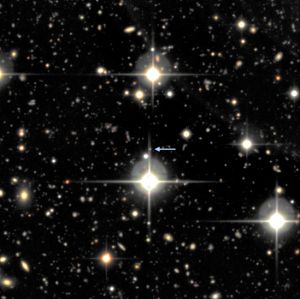 The new study finds that the supernovae are likely powered by the creation of a magnetar, an extraordinarily magnetized neutron star spinning hundreds of times per second. Magnetars have the mass of the sun packed into a star the size of a city and have magnetic fields a hundred trillion times that of the Earth. While a handful of these superluminous supernovae have been seen since they were first announced in 2009, and the creation of a magnetar had been postulated as a possible energy source, the work of Howell and his colleagues is the first to match detailed observations to models of what such an explosion might look like.
The new study finds that the supernovae are likely powered by the creation of a magnetar, an extraordinarily magnetized neutron star spinning hundreds of times per second. Magnetars have the mass of the sun packed into a star the size of a city and have magnetic fields a hundred trillion times that of the Earth. While a handful of these superluminous supernovae have been seen since they were first announced in 2009, and the creation of a magnetar had been postulated as a possible energy source, the work of Howell and his colleagues is the first to match detailed observations to models of what such an explosion might look like.

